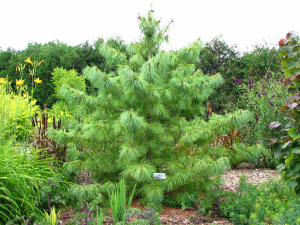By Vijaikumar Pandian
What’s Happening to Green Boxwood Hedge?
Bleached leaves and twig dieback are a common plight of this year’s boxwood bush caused by winter burn/winter desiccation injury. The winter damages observed on the boxwood in southeast Wisconsin region ranges from yellowing leaves on the top few inches or on the sides of the bush to severe dieback of twigs and stem on the bush. Winter burn injuries occur on the sides of the bush facing direct exposure to sun, wind, or radiated heat from buildings, sidewalks, or driveways.
Winter desiccation injury typically happens during warm sunny or windy days when the ground is still frozen and the leaves continue to transpire and could not replace the lost water.
By mid to late spring, healthy live buds begin to swell and produce new growth as the season starts to warm up. In case any sign of new growth or bud swelling doesn’t happen by late spring, prune off the dead twigs and stems or shear off desiccated leaves on the sides/top of the bush. If more than 50% of the boxwood bush shows severe twig and stem damage, then it is best to replace the bush.
Alternatives to Austrian Pines
One of the most common fungal diseases causing the needles of an Austrian pine tree to turn brown is the dothistroma needle blight. The past few years of wet and humid growing seasons in WI has caused wide spread infestation of this fungal disease on Austrian pine trees. Infected needles of this blight disease has a classic reddish brown band encircling the mid region of the needle. The tip of the needle above the reddish brown band dies and turns brown, but the base of the needle remains alive and green. On severely infected trees, the entire needles can turn brown and can lose its aesthetic appearance. Unfortunately, new growth occurs only on the branch/shoot tips and will not replace the dead needles along the branch arm.
If more than 50% of the tree has severe infection, then it is better to replace the tree. In future, avoid close plantings of Austrian pine trees or better select a different conifer species in the landscape.

A Korean Pine is one of the good replacement options for an Austrian Pine severely affected by needle blight.
Alternatives to Austrian Pines:
-
-
- Pinus cembra (Swiss stone pine*),
- Pinus koraiensis (Korean pine*),
- Picea abies (Norway spruce), Thuja occidentalis ‘Nigra’, ‘Techny’, or ‘Brandon’ (cultivars of arborvitae or eastern white-cedar)
- Thuja plicata (western red cedar),
- Picea glauca var. densata (Black Hills spruce).
-
(*doesn’t tolerate poorly drained wet soil)
Plant Health Advising Offices (PHA)
For more gardening info or plant health related questions, contact us at:
Extension Milwaukee County – 414-615-0515, 414-525-5638 email: planthealth.advisors@extension.wisc.edu
Vijaikumar Pandian, Horticulture Extension Educator, email: vijaikumar.pandian@wisc.edu





